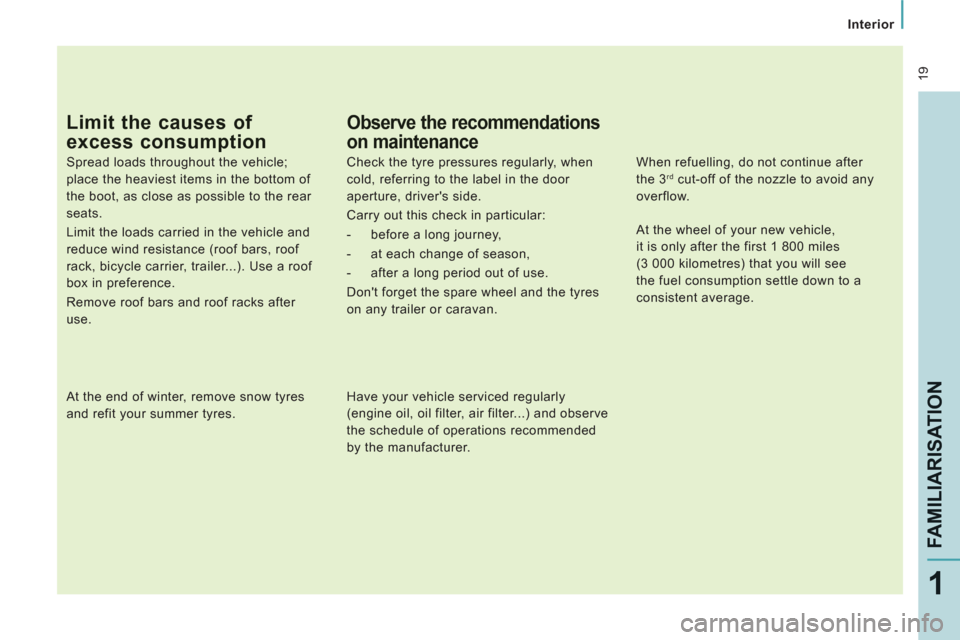19
Interior
FAMILIARISATIO
N
1
Limit the causes of
excess consumption
Spread loads throughout the vehicle;
place the heaviest items in the bottom of
the boot, as close as possible to the rear
seats.
Limit the loads carried in the vehicle and
reduce wind resistance (roof bars, roof
rack, bicycle carrier, trailer...). Use a roof
box in preference.
Remove roof bars and roof racks after
use.
At the end of winter, remove snow tyres
and refit your summer tyres.
Observe the recommendations
on maintenance
Check the tyre pressures regularly, when
cold, referring to the label in the door
aperture, driver's side.
Carry out this check in particular:
- before a long journey,
- at each change of season,
- after a long period out of use.
Don't forget the spare wheel and the tyres
on any trailer or caravan.
Have your vehicle serviced regularly
(engine oil, oil filter, air filter...) and observe
the schedule of operations recommended
by the manufacturer.
When refuelling, do not continue after
the 3 rd cut-off of the nozzle to avoid any
overflow.
At the wheel of your new vehicle,
it is only after the first 1 800 miles
(3 000 kilometres) that you will see
the fuel consumption settle down to a
consistent average.
151
Dimensions
TECHNICAL DAT
A
8
H1
L Overall length
4 805
5 135
H Overall height pneumatic/metal suspension
1 895/1 942
A Wheelbase
3 000
3 122
B Front overhang
975
C Rear overhang
830
1 038
Overall width:
on panel
1 870
D with mouldings
1 895
with mirrors folded
1 986
with mirrors unfolded
2 194
E Width of front tracks
1 574
F Width of rear tracks
1 574
Turning circle between kerbs (m)
12.18
12.59
Maximum loads (kg)
Payload
1 000
On roof
170
DIMENSIONS (MM)
The vehicle is available in 2 lengths (L1, L2) and 1 height (H1),
refer to the tables:

